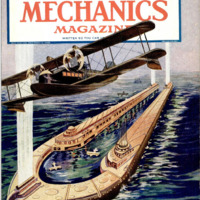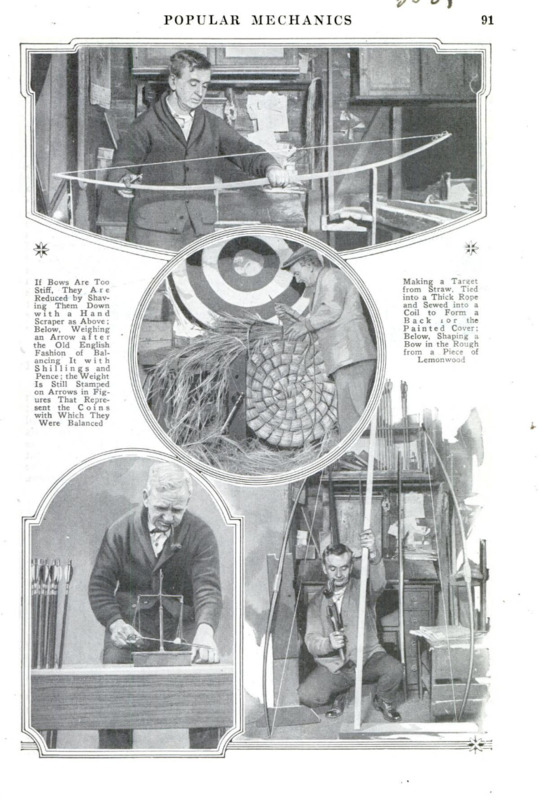The Revival of Archery
Item
-
Title (Dublin Core)
-
The Revival of Archery
-
Article Title and/or Image Caption (Dublin Core)
-
The Revival of Archery
-
extracted text (Extract Text)
-
IN a little shop at the rear of a dwelling in a side street of Jersey City, N. J..are made by hand most of the bows and arrows used by the foremost archers in the United States. In this age of specialization and ponderous machinery, James Duff, the proprietor, still plies his ancient craft. The wood from which the bow is fashioned is lemonwood, imported from South Africa. It is seasoned for seven years. Arrows are fashioned of Norway pine. The Flemish bowstring has been manufactured by one family in Belgium for the past 300 years.
Every implement is made to order, and the purchaser specifies the poundage he wants it to register when drawn. The great skill of the craftsman may be gauged by the fact that he is rarely more than an ounce or two out of the wav when he makes the first test. Although lemonwood is quite hard, the tremendous pull of the string when the bow is in use would soon cut through it. A material of extreme hardness is, therefore, necessary for the tips, and for these the craftsman goes to South America, it having been discovered that the horns of South American oxen are best suited for this purpose. Tips are cut to fit over the ends of the bow, glued in place, and then notched for the string. The Norway pine arrow stock is cut into thirty-inch lengths, one-half inch square. Arrows are made to weight, and by an ancient system. Instead of the usual avoirdupois weights, shillings and pence are used. The average arrow weighs from four shillings six pence to five shillings, and the weight is specified by the purchaser. One of the most delicate operations in the whole process of arrow making is the insertion of the turkey-buzzard feathers in the shaft. Three incisions are made at one end of the arrow. The quills are shaved to the thickness of the feather itself, and are then coated with glue and set in the cuts on the arrow's surface.
-
Language (Dublin Core)
-
eng
-
Date Issued (Dublin Core)
-
1925-07
-
pages (Bibliographic Ontology)
-
90-91
-
Rights (Dublin Core)
-
Public Domain (Google digitized)
-
Archived by (Dublin Core)
-
Alberto Bordignon
 Popular Mechanics, v. 44, n. 1, 1925
Popular Mechanics, v. 44, n. 1, 1925




